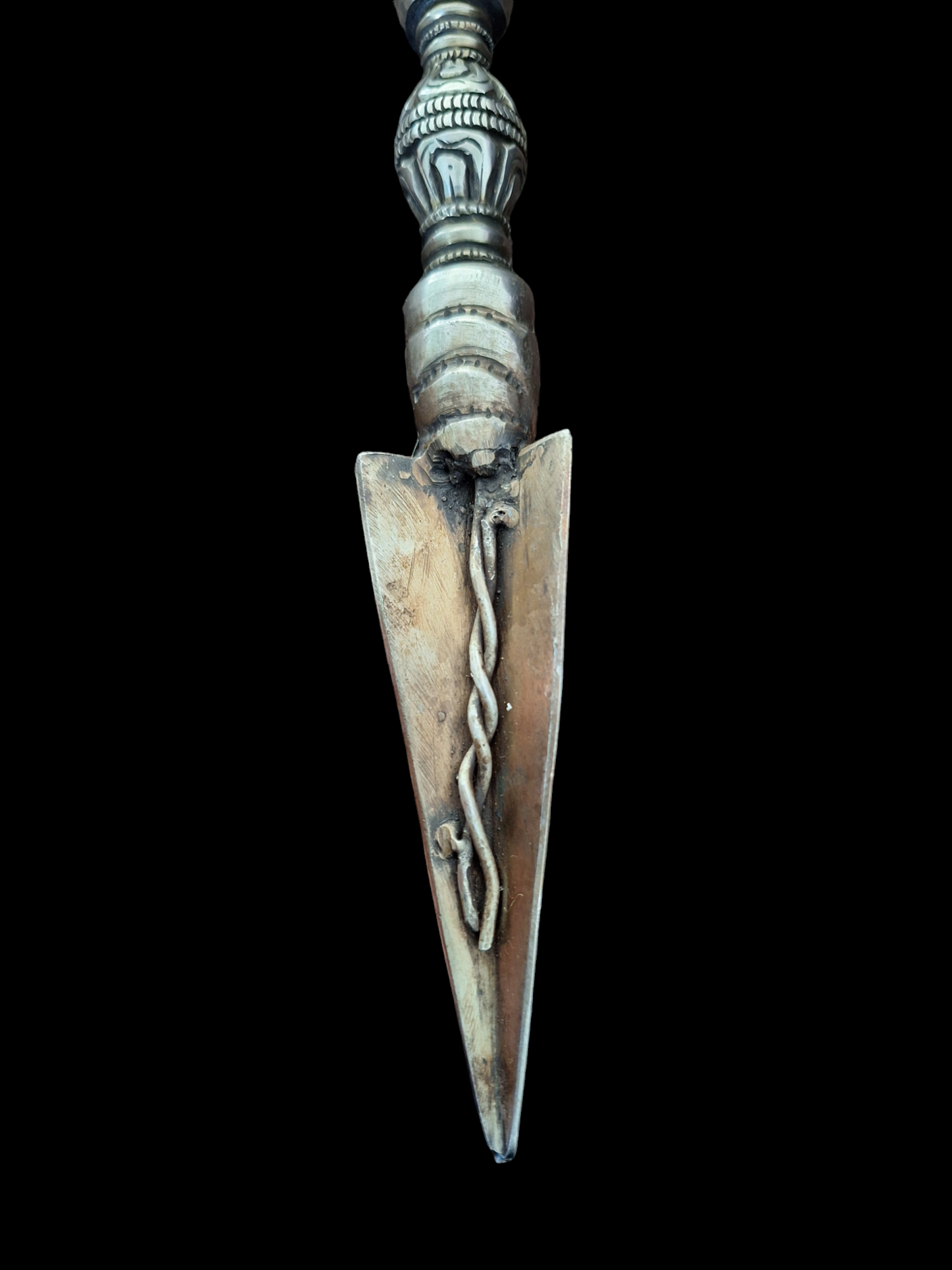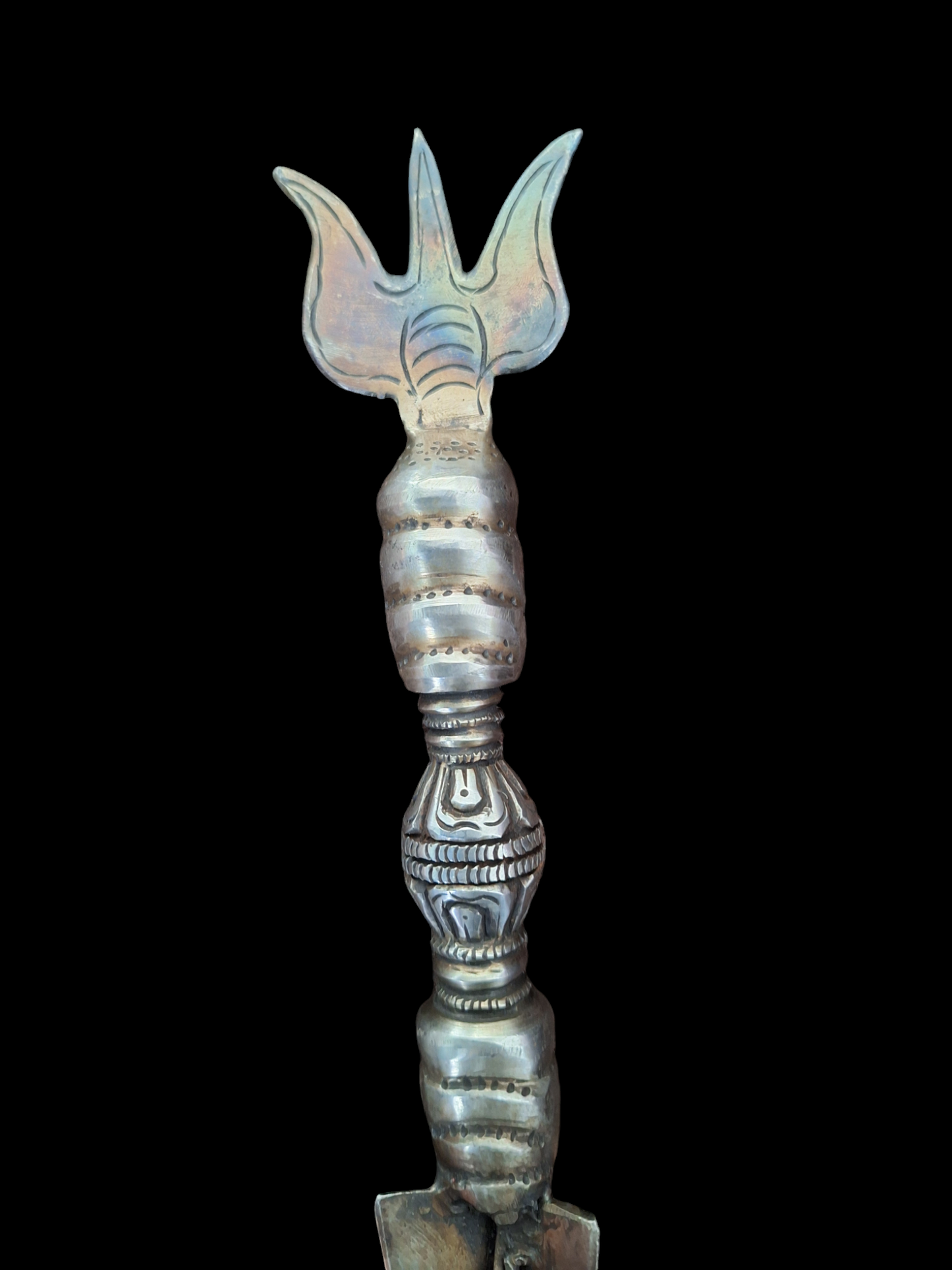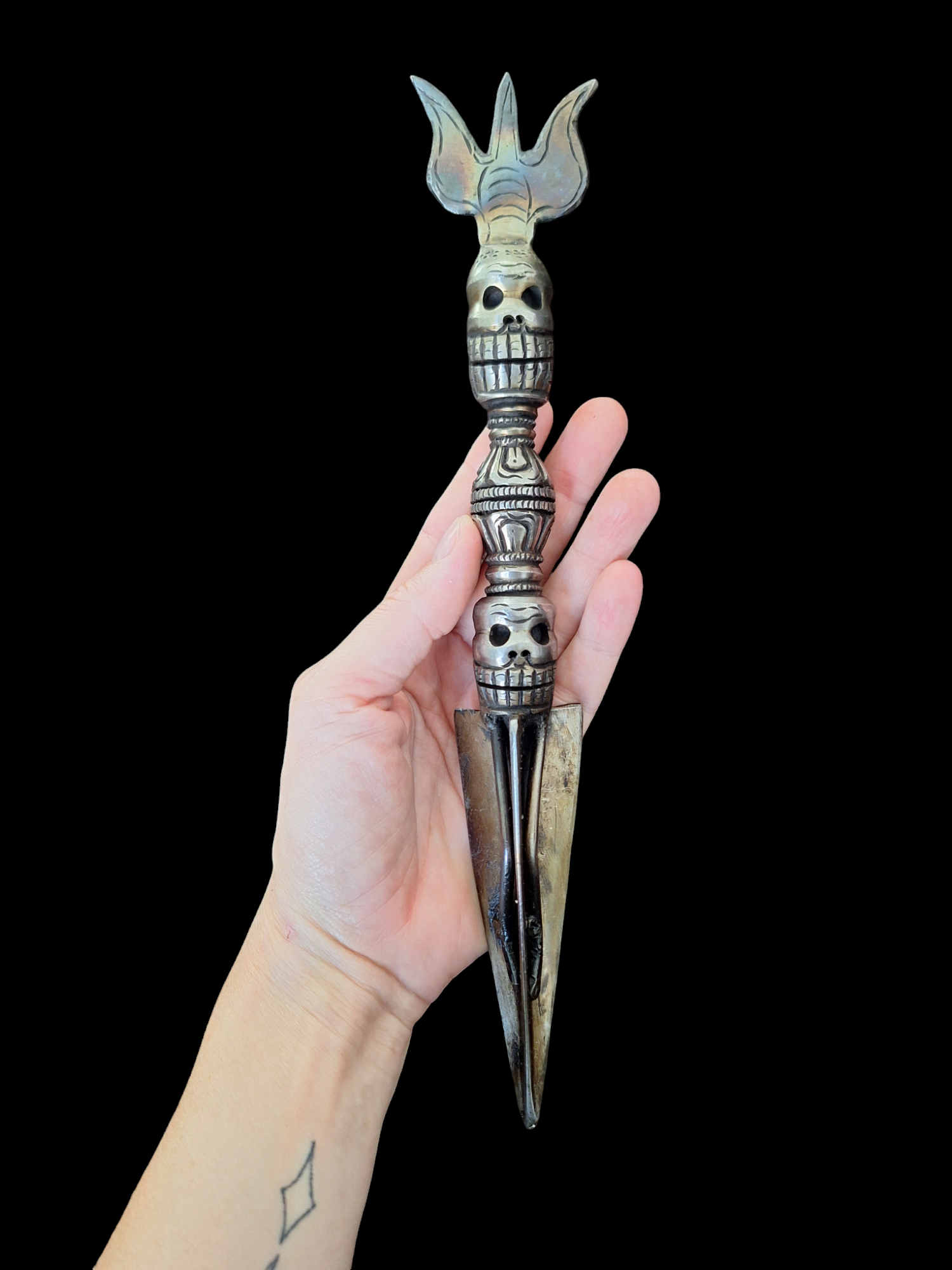Seawolf Shop
Iron phurba #1
Iron phurba #1
Couldn't load pickup availability
Share
Very beautiful iron phurba from Nepal with nicely detailed depictions. This phurba is recently made by a blacksmith in Kathmandu, Nepal. It is made from iron and therefore quite heavy; 427 grams. It is 30 centimeters long. A heavy metal phurba for heavy duty work!
Design characteristics:
Blade: downward facing naga's
Pommel and handle show a combination of traditional Tibetan Buddhist symbols, such as the dorje (vajra), human skulls and a trident.
The symbol of the trident (or trishula, as it is more often called in Hinduism and Buddhism) is a very ancient one. It can be found in spiritual traditions and historical and mythological tales all over the world. Depictions of tridents can be found in prehistoric petroglyphs, showing how this symbol even pre-dates the written history.
In eastern traditions such as Hinduism and Buddhism, the trident is considered to be one of the most important (symbolic) weapons used by a number of deities such as Shiva and Durga to fight against the enemies of Buddhism and the forces of Evil in general.
The trident symbolizes trinity in many different ways. For example in Buddhist symbolism it can represent the the three aspects of consciousness (waking, dreaming and sleeping), or the three (Buddhist) jewels Buddha, Dharma and Sangha.
Also in traditional shamanism the trident can be found. Here yet other forms of trinity it symbolizes can be considered important, such as the three times (past, present and future), or the trinity of Powers (will, knowledge and action), or the trinity of Creation, Preservation and Destruction. A trident worn or used by a traditional shaman can be considered a symbol of willpower, inner strength and authority. It can be both a powerful, active tool or even weapon for the shaman when performing healing rituals or ceremonies, or can be used as a protective attribute for spaces and locations.
The skull as a symbol can be found in religions and spiritual traditions all over the world, but nowhere is it more prominent or has a more complex and deep symbolism than in the Himalayan regions influenced by Tibetan buddhism.
On the one hand it can be said that the symbol of the skull (of course) refers to death; it is a powerful reminder of the fact that all our lives will simply end one day. The symbol of the skull is thus used in all kinds of meditative practices to contemplate on this inevitabilty and also on the other side of this medal; how important it is to live your life in the best possible and most compassionate of ways.
On a more metaphorical level, contemplating on the image of the skull also is a powerful practice in cutting through the bonds with one's own ego and the identification with the physical body. It takes us to the limits of human knowledge and helps to gain insight in the buddhist concept of 'Emptiness', which doesn't mean 'nothing-ness', but actually quite on the contrary refers to the true nature of the universe and reality; the endless, ultimate emptiness in which all possibilities exist.
Human skulls are also very prominent in the iconography around a lot of the 'wrathful' deities in Tibetan Buddhism and Hinduism. Wrathful deities are the fierce, forceful aspects or manifestations of Buddhas, Bodhisattvas or Devas. They are often portrait as terrifying, demonic looking beings adorned with human skulls or bone ornaments and ritual weapons. In this setting, the human skulls symbolize all the poisonous delusions and limiting mental beliefs that need to be overcome on the path to enlightenment.
Read more about the general and specific design and symbolism of the phurba in the general description of this webshop-collection.























